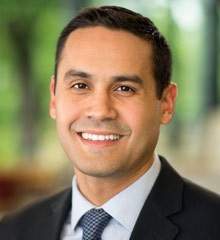course design
Select an item by clicking its checkbox
I wish I could tell you exactly what I’ll be doing on the first day of my new course. But I can’t. What I can say is that the syllabus is mostly finished, and I’ve scheduled meetings with the herpetologist, my Writing Across the Curriculum consultant, and ...
Editor’s note: Today’s blog is Eric's final individual entry for this year of Stories from the Front (of the Classroom). Look for our final collaborative post on Tuesday May 19. One of the things I love most about teaching is the rhythm of the academic year: the excitement of ...
This is a post about that time I taught a semester-long class on a topic about which I knew almost nothing… or perhaps I should say “the most recent time.” This was no one’s fault but my own. I work at a college that has no requirement for students ...
Eric D. Barreto When I was prepping my first online class, all I wanted was for someone to show me how to teach online. I wanted techniques. I wanted examples of best practices. I wanted a template upon which I could build. But I quickly learned that the hardest part ...

Achieving Excellence in Teaching: A Self-help Guide
Date Reviewed: February 26, 2015
If you are looking for a book on teaching in higher education that does not scare you off with its heft, or frustrate you with its discipline-specific content, or confuse you with so many tips your head spins, then this little book might be just the thing for you! The authors combine their 110 years of faculty development and educational experience to offer their “Ten Top Traits for Terrific Teachers,” targeting the basic dispositions, skills, and strategies that have the greatest impact on deep student learning. Furthermore, they encourage teachers to reflect on their practice with a series of rubrics and action plans: “To improve by increments you must do something” (108). Throughout, they give snapshot summaries of the best research, all in a conversational tone.
In an unusual turn, the first half of the book deals, not with mastery of content or course design, but with the internal drivers of the teacher. According to the research, teachers in the classroom have the most impact on students’ success, especially those teachers who exhibit a set of dispositions, or “positive ideologies of self, others, and the very act of teaching” (17-18). More specifically, these teachers demonstrate passion for their subject, professing, and student success; they care deeply, build excellent rapport with students and colleagues, and demand excellence from students and themselves. These dispositions can be learned.
The second half of the book addresses the more external markers of excellent teaching. The authors promote solid organization that clearly identifies student learning outcomes and directly links related assessment and learning activities (47). They promote the use of CRISP to create a unity of purpose in individual classes: Contextualize; Review; Iterate; Summarize; and Preview (49-54). They encourage teachers to be “mentors from the middle,” to assume as necessary such roles as facilitator, coach, artist, critical reflector, model, and scholar (61). The authors encourage the use of technology in service of higher-level learning goals, and they recommend the most useful and cost-effective strategies (71-77). They encourage teachers to integrate their teaching, scholarship, and service in order to stimulate student interest and to model scholarly behavior (95). They promote experimentation and welcome creativity into the classroom both by accident and by design. Finally, they invite teachers to consider their teaching environments – everything from the space in which they teach to the psychological space they create for student risk-tolerance (105-109).
While not specifically addressing educational strategies in religion and theology, this little volume compacts significant research on teaching and learning into accessible portions – enough to get started but not too much to overwhelm – with support from a concise and pertinent bibliography. And it invites readers to set plans in place for improvement and on-going assessment with its set of rubrics. The book is a useful entry point for both new and seasoned teachers to revitalize and to enhance their teaching practice. It is my choice for use in faculty development initiatives.



